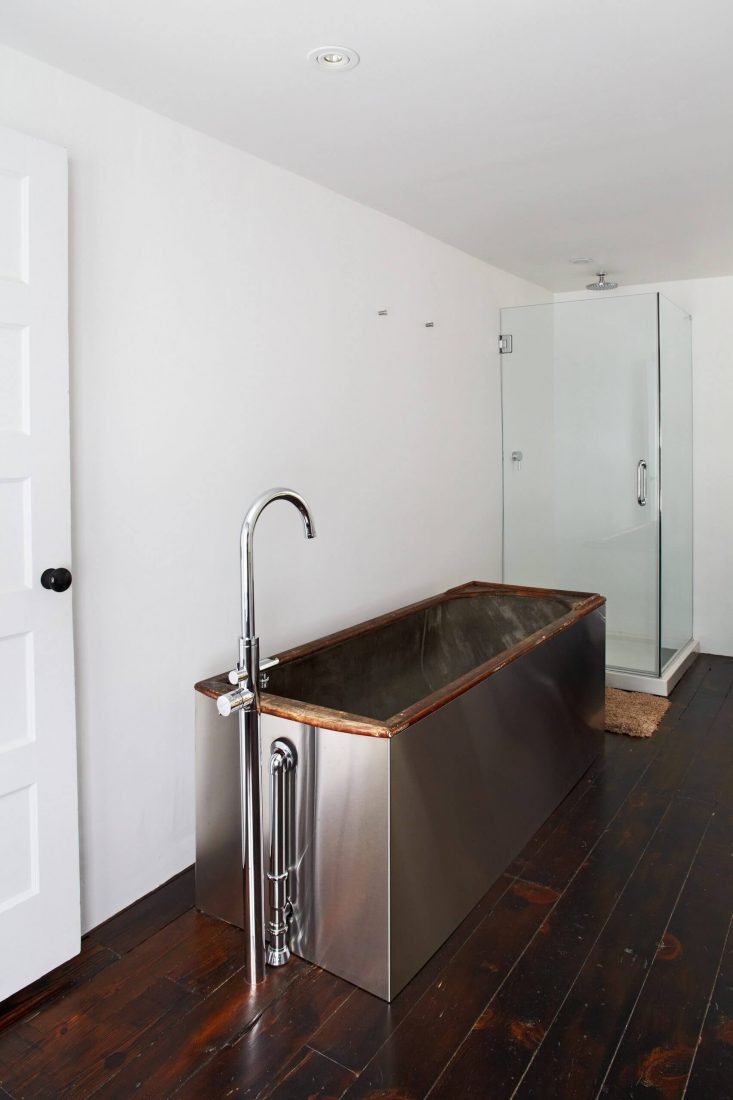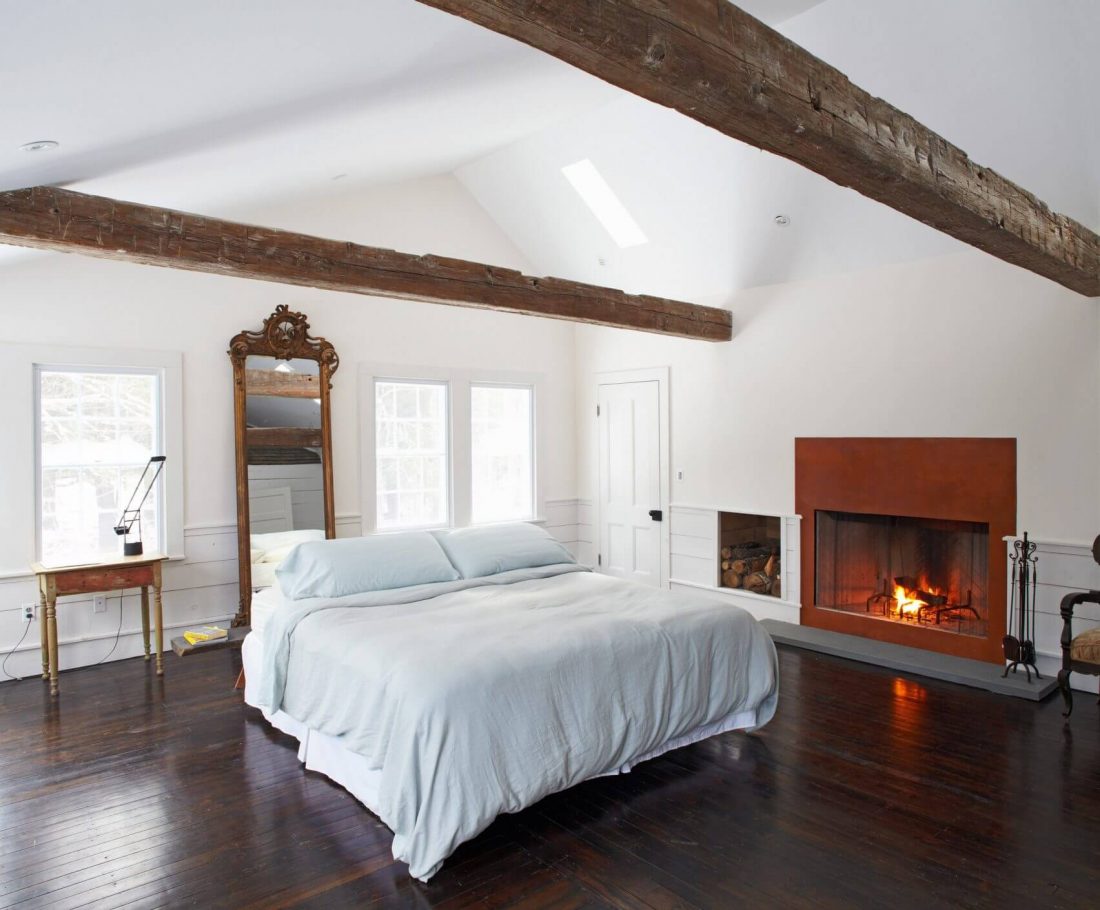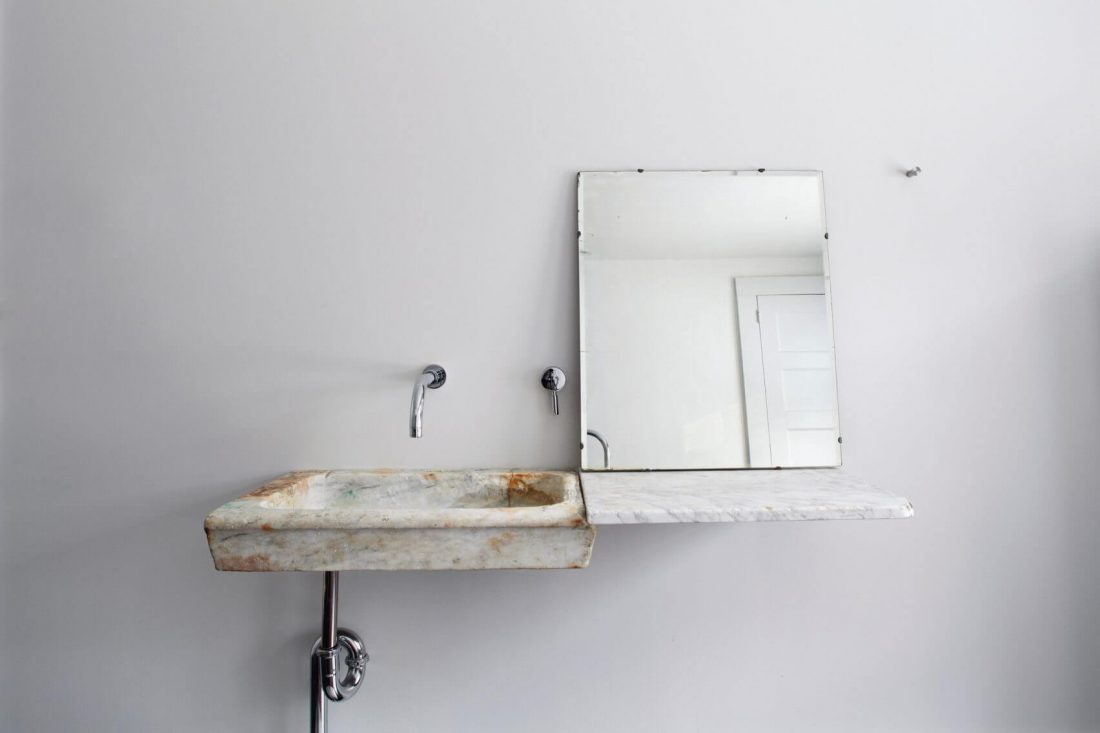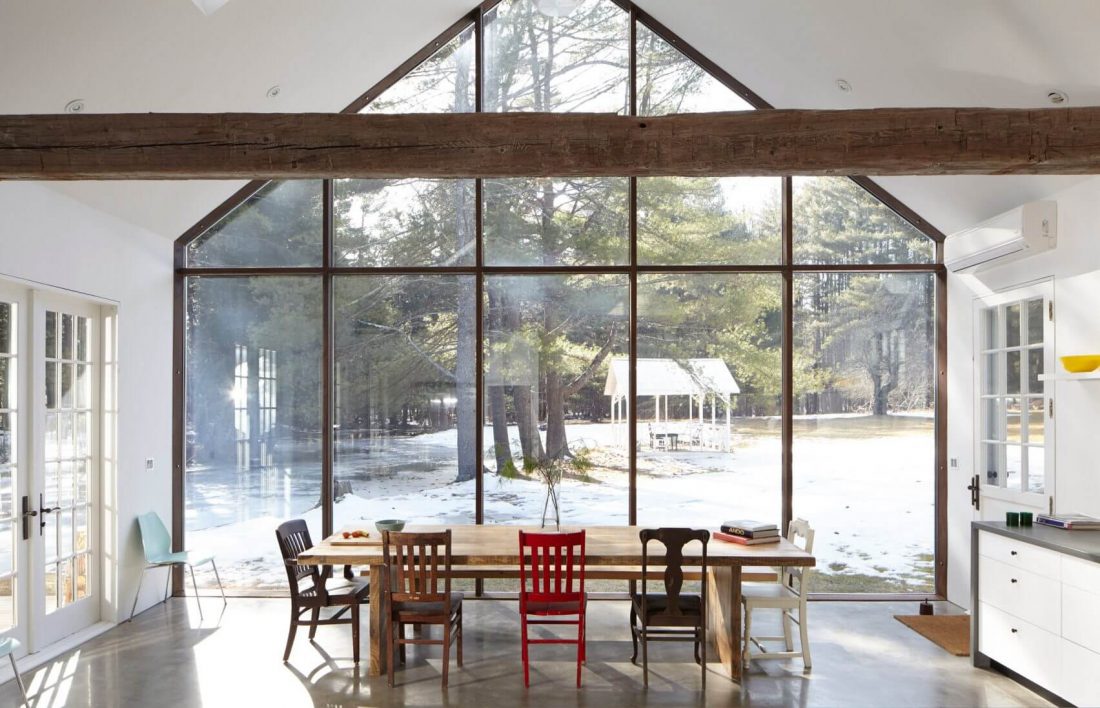Designer Tom Givone has overhauled a farmhouse in rural New York, together with the accession of a glass-fronted extension overlooking a creek.
Self-taught designer Tom Givone changed a dilapidated building in Eldred — a little city in upstate New York — to make a large, light-filled house with a generous kitchen, dining and lounge areas.
The expansion also offers a veranda that jobs out across the face of a neighboring creek, thus the name Floating House.
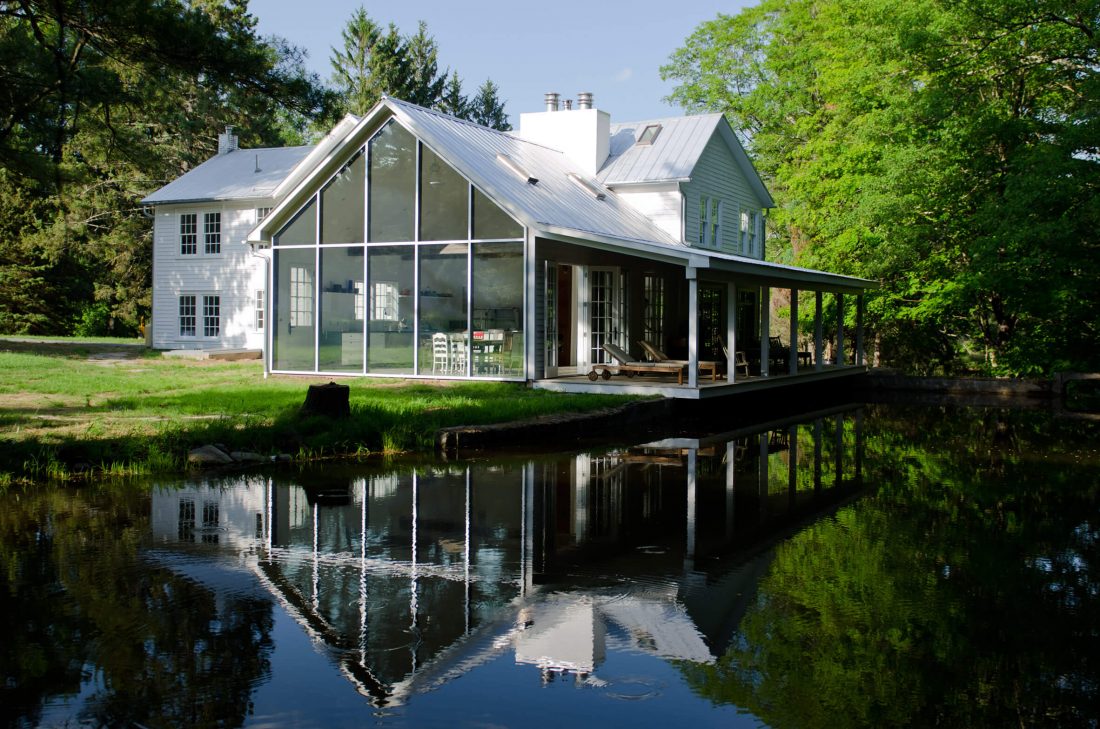
The two-story house was constructed in the 1820s and has first colonial revival touches, such as white-painted timber cladding, original wood floors, and beams, double-hung sash windows and a tiny arched attic window.
Givone overhauled the inside, exposing first beams and hardwood floors, and adding a new wood-burning stove in the kitchen. The residence is finished by polished concrete floors, a vaulted ceiling and massive amounts of natural light, brought in through the new glazed wall.
“Sited in the edge of a pristine creek, with a waterfall cascading over an ancient dam of hand-laid rock, the Floating Farmhouse was a sinking boat when first discovered,” explained Givone.
“After a design and renovation process spanning four years, the 1820s manor house is currently a study in contrasts: entirely restored to its period grandeur while featuring purely modernist components, including a curtain wall of skyscraper glass in the kitchen, and polished concrete and steel finishes,” he said.

The floor plan was reconfigured, letting a large living space to takes up much of initial ground-floor footprint. A double-height fireplace centers the distance, together with the kitchen addition on its other side.
Also on the ground floor is a separate entry, a utility room, a tiny bathroom and a bedroom. Two separate staircases lead upstairs, where there’s a large master bedroom with a fireplace and a private bath, as well as another bathroom and two bedrooms that face the road.
Antique bits feature in the bathrooms, like an Italian marble hand-chiseled sink from the 18th century.
Givone discovered that in a hillside on the outskirts of Rome. “I mean hillside literally; it had been lying in the dirt on a grassy slope littered with other ancient stone artifacts,” he said.
“The expectation at the beginning was to combine archaic and contemporary elements throughout the home in a way that improves the inherent elegance of each by its comparison with all the other.”
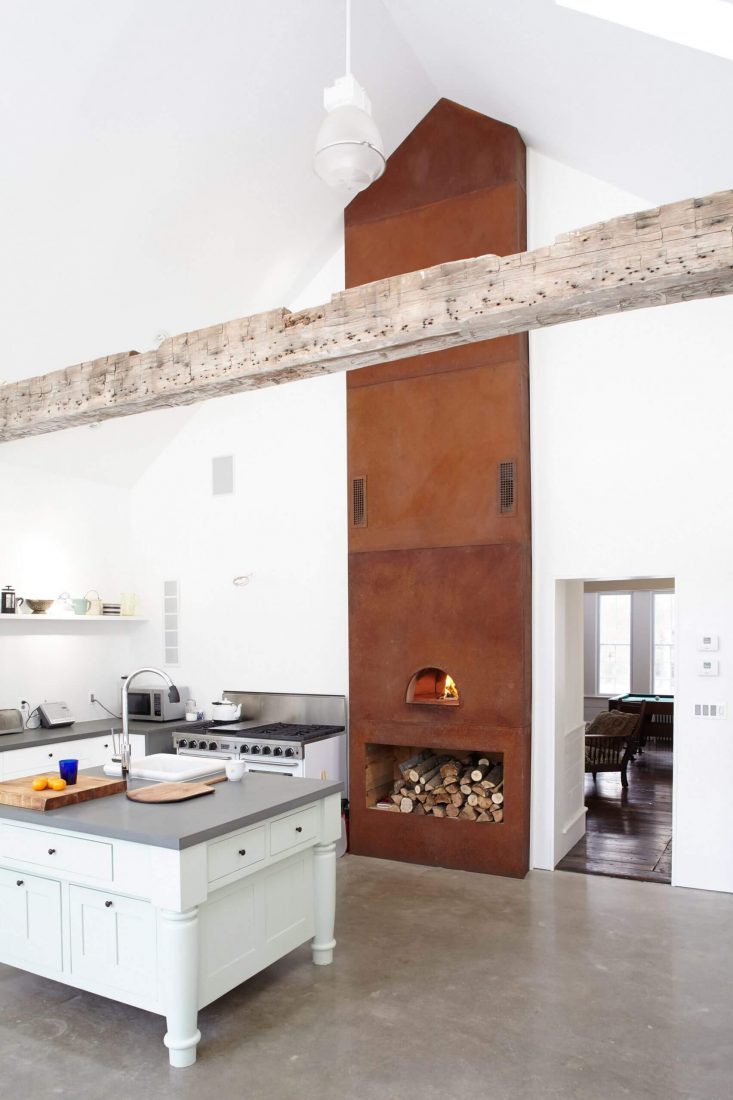
A heavy steel angle bracket is concealed in the wall to maintain the sink.
The wood and copper tub dates back to the late 1800s and was salvaged from a tenement residing in the Lower East Side of New York City.
“I wrapped the bathtub in stainless steel to emphasize its clean architectural lines and recast it into a modern context,” said Givone.
Floating House bears a few similarities to a renovation job that Givone has finished — a curvaceous expansion to a conventional house in rural Pennsylvania. Both endeavors combine antique furniture pieces with white, light-filled spaces.
